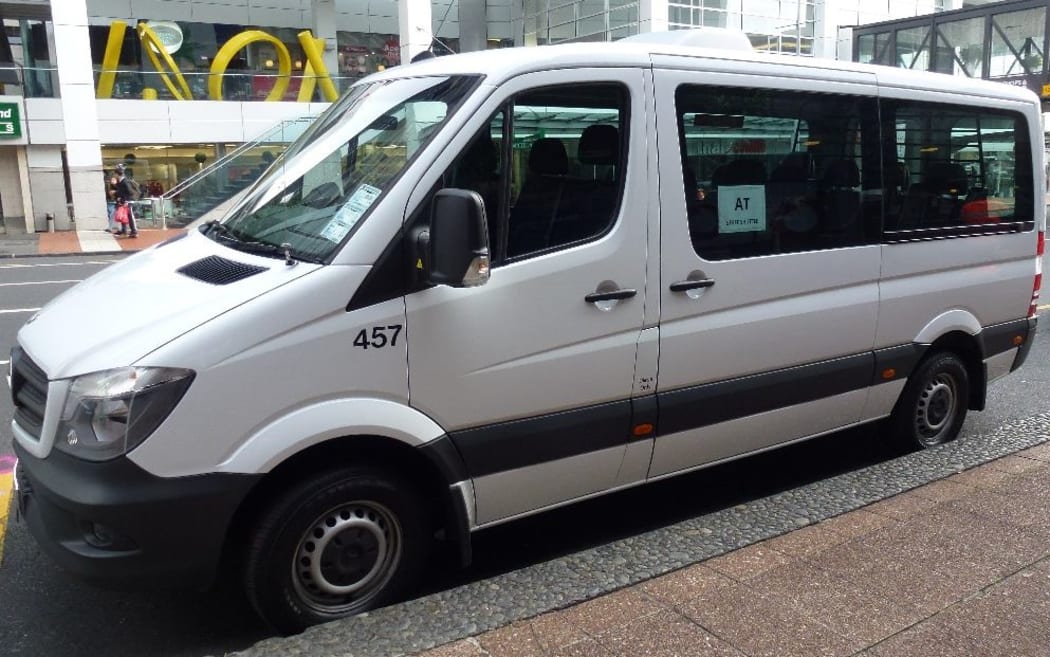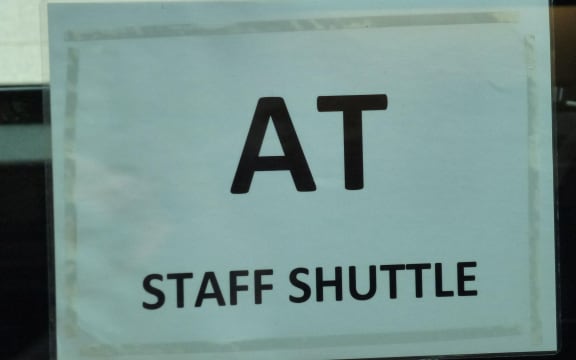Auckland's transport agency has axed the controversial staff shuttle it was using between its two main offices because it had found buses and trains were too slow.

The two 11-seater minibuses often ran empty during the $140,000 trial. Photo: RNZ / Todd Niall
The trial has been a flop, costing more than expected at $140,000, often travelling empty and failing to make the hoped-for savings.
The council-owned Auckland Transport launched the shuttle in May, when it was criticised by public transport advocates who said if services were too slow, they should be improved for everyone.
Auckland Transport hoped to save more than $300,000 a year in staff travel costs between its head office in Henderson, west Auckland, and its downtown office, opposite the Britomart Transport centre.
Savings were to come from cutting the agency vehicle fleet by 20 cars, and removing most of the $95,000 a year reimbursed to staff who drove in their own cars between the offices, claiming $32 per round trip.
However, the two 11-seater minibuses often ran empty, with patronage rising at the end of the six month trial to only 2.5 passengers per trip.
Only three of the hoped-for 20 fleet cars have been cut, and big savings have been made on paying staff to use their own cars, simply by banning the practice between Henderson and the CBD.
More work to reduce fleet
Chief executive David Warburton said after reimbursed private car trips were banned, many still preferred to drive at their own expense, rather than use the shuttle or public transport.

Photo: RNZ
The agency had said the six-month trial would cost $122,000, but an exit clause requiring a seventh month pushed the cost to $140,000. That is the equivalent of 50 Auckland households' annual rates bills.
"It has been money well-spent", said Dr Warburton. "We have established some changes in the operation, and that has to be allocated across the future efficiency of driving the business, and going forward."
But the agency admits it has more work to do to try to reduce its vehicle fleet, tighten spending on reimbursing private car use and look at other options such as video conference.
Dr Warburton said the direct bus and rail services which operate from the door of both offices did not suit much staff travel, taking 40-45 minutes and not suiting meetings which start at the top of an hour.
He said it was not easy to schedule meetings to better suit public transport travelling times because many involve other parties, although the agency would try that with internal meetings.

